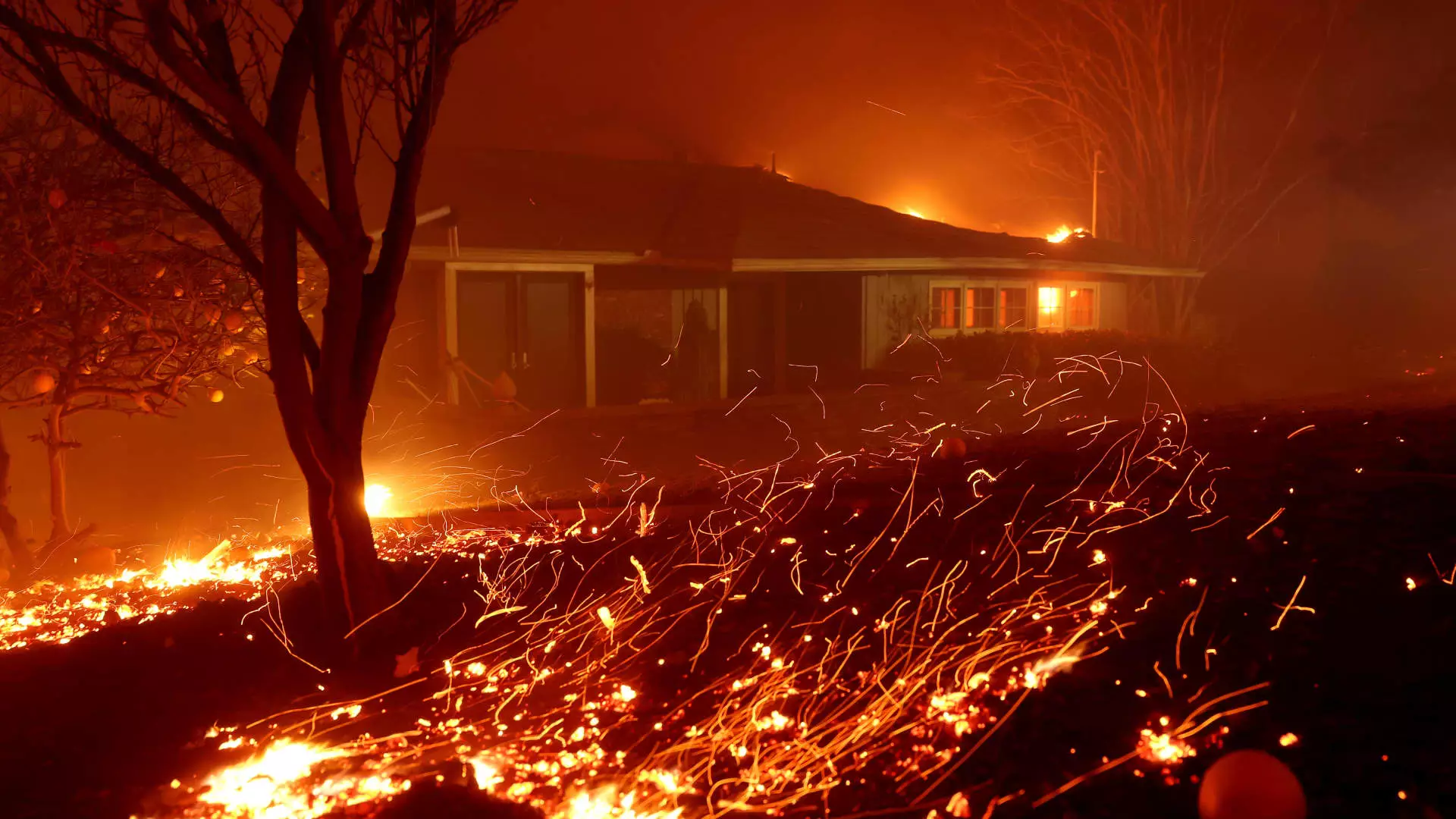The escalating effects of climate change are proving to be a significant wake-up call, particularly illustrated by the recent wildfires in Los Angeles. While the precise financial toll from these catastrophic events remains uncertain, it is clear that insurance costs are set to rise dramatically. This adjustment will not only affect property values in Los Angeles but ripple through real estate markets across the United States. According to research from First Street, a recognized climate risk assessment firm, the repercussions of climate change are no longer confined to speculative discussions; they are tangible and measurable forces reshaping the economic landscape.
By the year 2055, an alarming 84% of U.S. homes may experience a drop in their market value, culminating in an estimated $1.47 trillion in losses. The implications are dire; as Jeremy Porter, the head of climate implications research at First Street, states, “Climate change is no longer a theoretical concern—it is a measurable force reshaping real estate markets and regional economies across the United States.” What’s more, predictions anticipate that insurance premiums will surge by an average of 25% over the next three decades, exacerbating the financial burden on homeowners. This price surge is attributed to a combination of underpricing historical risks along with mounting risks associated with climate change.
While the national average may present a relatively moderate expectation of a 3% decline in property values, certain areas are expected to be hit much harder. In states such as Texas, Florida, and Louisiana, home values could be slashed in half as climate risks become increasingly evident. Dave Burt, founder of DeltaTerra Capital, has also been analyzing climate risks and cautions that within the next five years, at least 20% of homes across the nation could witness significant devaluation due to climate variabilities. The real estate market may face a drastic correction, reminiscent of the housing crash from 2007 to 2012, as increased ownership costs inevitably lower property values.
The insurance sector is at the center of this storm. Historically, insurers have been slow to adjust premiums in light of escalating climate-related incidents. However, Burt notes that the fragility of the system is beginning to unravel as insurance failures are increasingly apparent. The consequences are stark: when insurance costs rise, the overall cost of home ownership will increase, thereby driving home values down. The stability of the mortgage market is also in jeopardy; some regional economies may struggle to sustain themselves as higher premiums and increased risk calculations complicate property sales.
The issue does not just stop at property values and insurance costs; it extends into broader economic territories. As witnessed after significant disasters—like Hurricane Sandy or the Iowa floods—foreclosures in affected regions can skyrocket. In the aftermath of disaster events, homeownership can become a burdensome liability rather than an asset, which leads to a cycle of decline that is difficult to reverse. Experts, including Ben Keys from the Wharton School, have stressed that properties must undergo a recalibration to adapt to the new market dynamics created by escalating climate risks.
The mortgage industry itself is not insulated from these risks. While Fannie Mae has not yet included climate risk factors within its underwriting practices, there is a growing realization that these considerations cannot be entirely ignored. Climate risk is inherently tied to property values and, by extension, mortgage stability. Tim Judge, Fannie Mae’s chief climate officer, has indicated that consumers may be unaware of how climate change can affect insurance premiums and property valuations, leading to long-term implications for loan affordability and availability.
As property owners, potential buyers, and investors confront these unsettling realities, taking proactive steps becomes vital. Professionals like Burt emphasize the importance of integrating a comprehensive understanding of climate risks into investment strategies. This could involve avoiding high-risk securities or utilizing financial instruments such as mortgage credit derivatives to hedge against potential losses. Communities may also need to consider increasing local taxes to fund initiatives focused on resilience and sustainability.
Despite the pressing nature of these challenges, the current administration’s actions concerning flood risk management standards raise additional concerns. Immediate reversals could undermine long-term mitigation efforts, leaving communities even more vulnerable to future disasters. The urgency of addressing climate-related risks transcends any single region, heralding a nationwide need for a collective response to protect home ownership as a pillar of economic stability.
As climate change transforms the real estate market, a dynamic and coherent response is essential. The implications stretch beyond mere property values; they encompass an intricate dance of financial repercussions that demand the attention of homeowners, investors, and policymakers alike.

